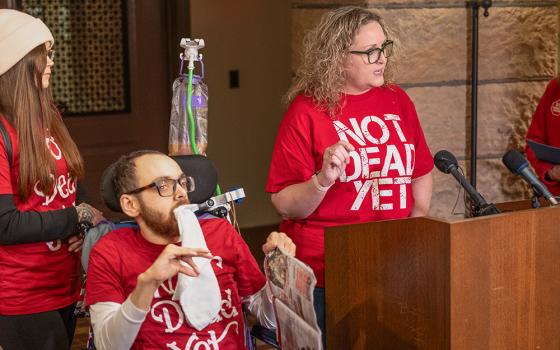CIVIL RIGHTS ADVOCACY ON BEHALF OF THE POOR
By Catherine M. Paden
Published by University of Pennsylvania Press, $55
Catherine Paden asks an important question for anyone concerned about social justice in democratic societies: How can we generate support for those most marginalized in society -- those most in need of help?
In the process of providing a persuasive answer in Civil Rights Advocacy on Behalf of the Poor, Paden teaches readers much about organizational behavior and the roles that well-known civil rights groups played in public debates about poverty during the past 60 years.
As Paden is a political scientist writing for other political scientists, much of her book focuses on the academic undertaking to refine models of democratic participation and exclusion, and to explore the value of archival research as she lays out her complex and systematic methodology. Yet the subject is sufficiently compelling to invite readers less interested in the disciplinary tasks to follow as well.
Paden explores five civil rights organizations’ actions in six moments of national debate about poverty: President Kennedy’s amendments to the Social Security Act; the period of President Johnson’s War on Poverty; the 1966-68 debates about reducing funding for the War on Poverty; the debates about the Family Assistance Act in the early 1970s; the period of welfare reform and the introduction of Temporary Assistance to Needy Families in the mid-1990s; and the responses to Hurricane Katrina in 2005.
What role did the National Association for the Advancement of Colored People, the National Urban League, the Congress of Racial Equality, the Southern Christian Leadership Conference and the Student Nonviolent Coordinating Committee play in those broad debates?
Implicit in Paden’s work is the question of whether organizations can act altruistically. These groups, formed initially to address racial issues, consisted primarily of middle-class members. They stayed alive on dues or donations; their inclination and self-interest were best served by a focus on issues that touched their middle-class members most directly.
The author tells us that most social science literature concludes that organizations act consistently in their own self-interests, and yet these civil rights groups did advocate for poverty-oriented public policies and programs to help the poor -- people who could do nothing to help sustain the organizations.
Her exploration prompts three questions one might ask of an organization such as the Catholic church:
- Can the church transcend the organizational self-interest of its members to advocate on behalf of the poor consistently, across long periods of time?
- Can sustained emphasis on social justice long endure as a central pillar of church endeavor, or must the church, like civil rights organizations, make such efforts “high level priorities” only episodically?
- Can altruism animate organizations?
The long focus on social justice practiced by the elements within the Catholic church suggest that it is possible. Various religious orders have served the poor for centuries, Catholic Charities is marking its centennial, and the Catholic Worker movement has persisted for three quarters of a century.
An open question remains, however: How successful have these church groups been in focusing the broader church, let alone the societies in which Catholics live, on the plight of the poor?
Paden is not convinced organizations act altruistically, but her silver lining is that some civil rights organizations may see their own persistence, and perhaps existence, tied to that advocacy and, she suggests, that’s sometimes sufficient to effect meaningful policy reform.
Is organizational altruism more prevalent than Paden would lead us to believe? I suspect and hope so.
[Timothy Kelly is professor and chair of the history department at St. Vincent College in Latrobe, Pa.]
NOTE: The book will be published in December.




